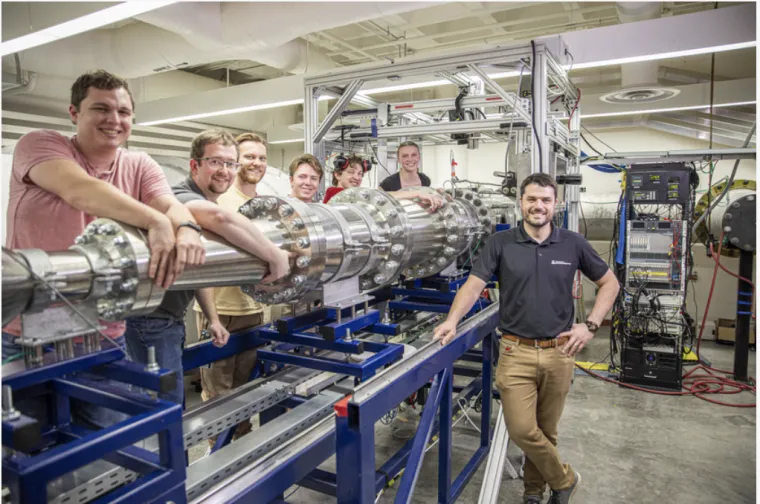Conversations with Rising Stars
ALEX CRAIG
As assistant professor of Aerospace-Mechanical Engineering, Alex Craig serves as director of the Boundary-Layer Stability & Transition Laboratory. His research primarily focuses on the experimental study of high-speed and hypersonic boundary layers. As much as he enjoys the rush of research breakthroughs, Craig explains in our Conversations with Rising Stars that he’s more than happy to share that experience with his graduate students…

What initially attracted you to the current focus of research?
I got into aerospace originally because my dad was an engineer at a major aircraft manufacturer, so I was immersed in learning about aircraft from a young age. When I was an undergraduate, I was fascinated by fluid mechanics in general and took several electives, which led me into the field of viscous flows. I ended up doing hypersonics because I had an interest in doing things that were on the bleeding edge, and what’s cooler than things that fly so fast that they get red hot? There’s also the aspect of it being a field that is important to national security, and I feel a strong sense of duty to do my part to contribute where I can.
How have collaborations impacted my work on campus?
I am generally a big fan of collaborations, whether it’s within my own field of high-speed aerodynamics or cross-disciplinary (e.g., with researchers studying guidance and navigation or optimization). Collaboration has many benefits, perhaps most notably encouraging me to explore fields that are adjacent to but distinct from my own. Perhaps a more nuanced advantage is that, by working with others, you are forced to think about problems in ways that perhaps you haven’t before, even in your own field.
Research breakthroughs take time, so what keeps you motivated in your daily duties?
The moment when you have a breakthrough and you are, for however fleeting a moment, the only person in the world who knows something new, is just an incredible feeling. These days, that feeling is largely one that my graduate students experience, so I have to live vicariously through them, but it’s just as rewarding to watch them have that same feeling and grow as researchers.
What about your experience at the U of A makes you want to continue your career as a Wildcat?
The leadership at University of Arizona at multiple levels has really bought into our vision for elevating hypersonics research at the university. The result is that we have built a really nice interdisciplinary ecosystem around the broader challenges in hypersonics. That’s a really nice and uncommon situation.
When you describe your research to someone for the first time, what’s one major point you hope they understand?
The field of hypersonics impacts more than just defense research. It has real implications for affordable space access, and, if commercialized, would seriously reduce the time it takes for people to travel long distances, such as trans-oceanic flights.

